Community articles — Two-column
Recent
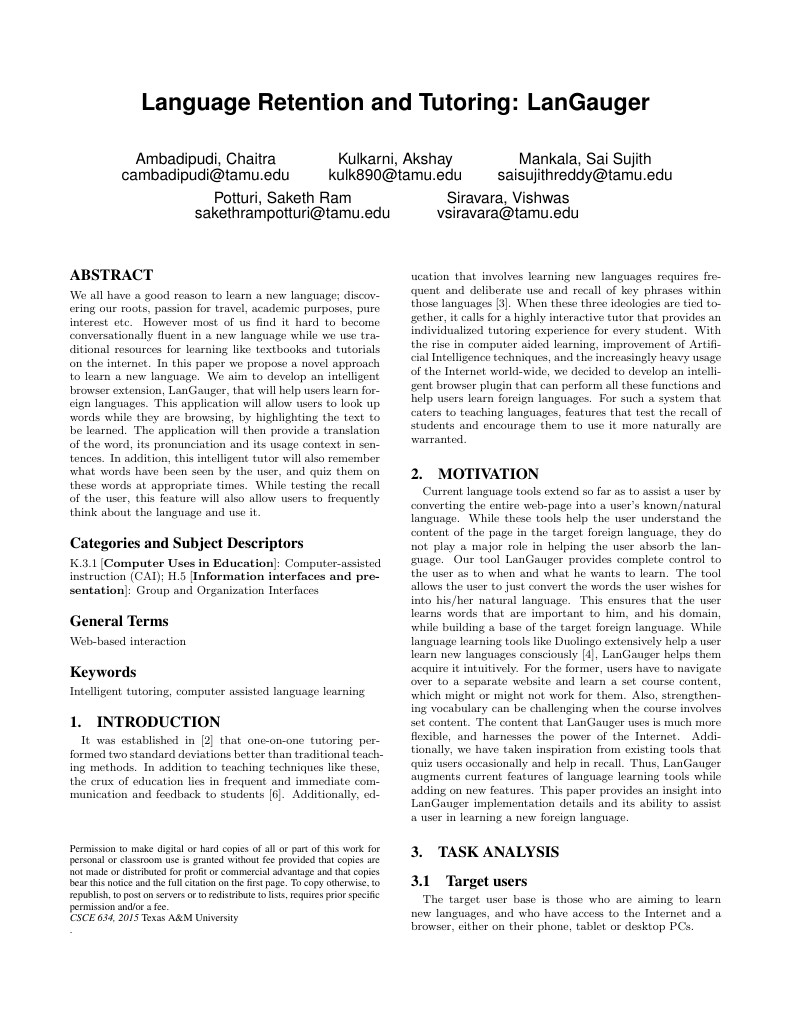
We all have a good reason to learn a new language; discovering our roots, passion for travel, academic purposes, pure interest etc. However most of us find it hard to become conversationally fluent in a new language while we use traditional resources for learning like textbooks and tutorials on the internet. In this paper we propose a novel approach to learn a new language. We aim to develop an intelligent browser extension, LanGauger, that will help users learn foreign languages. This application will allow users to look up words while they are browsing, by highlighting the text to be learned. The application will then provide a translation of the word, its pronunciation and its usage context in sentences. In addition, this intelligent tutor will also remember what words have been seen by the user, and quiz them on these words at appropriate times. While testing the recall of the user, this feature will also allow users to frequently think about the language and use it.
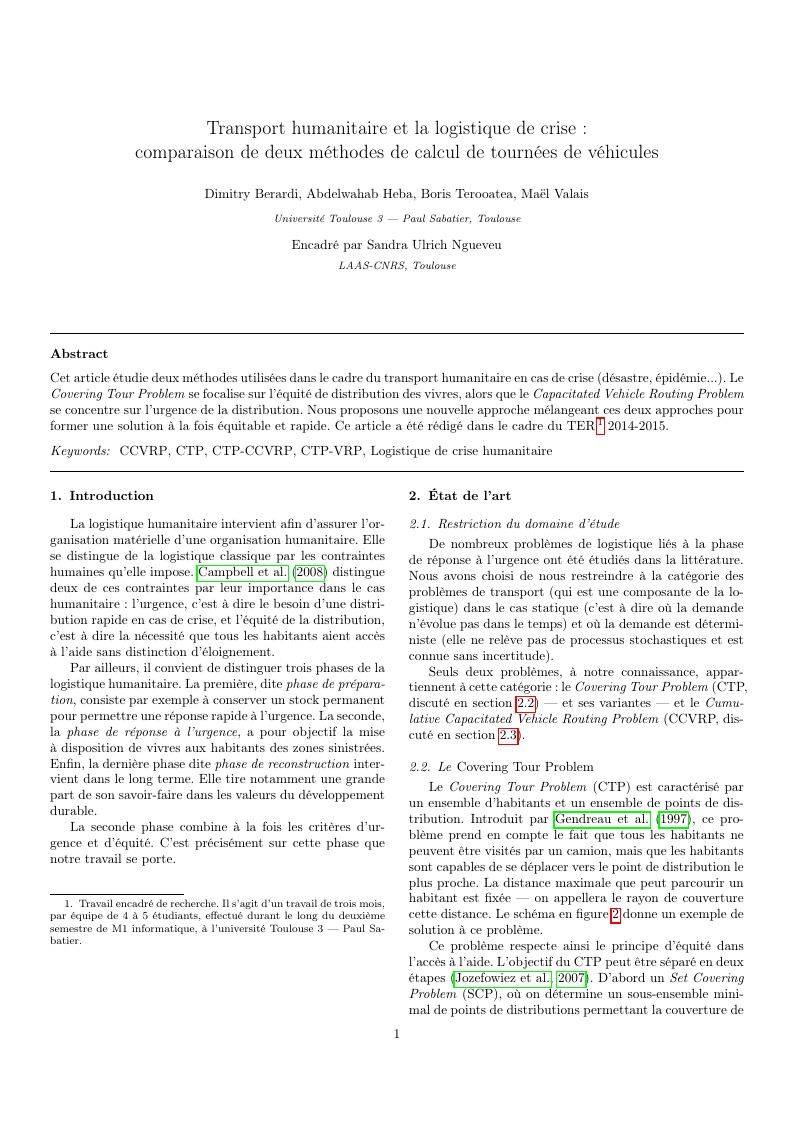
Cet article étudie deux méthodes utilisées dans le cadre du transport humanitaire en cas de crise (désastre, épidémie...). Le Covering Tour Problem se focalise sur l'équité de distribution des vivres, alors que le Capacitated Vehicle Routing Problem se concentre sur l'urgence de la distribution. Nous proposons une nouvelle approche mélangeant ces deux approches pour former une solution à la fois équitable et rapide. Ce article a été rédigé dans le cadre du TER 2014-2015.
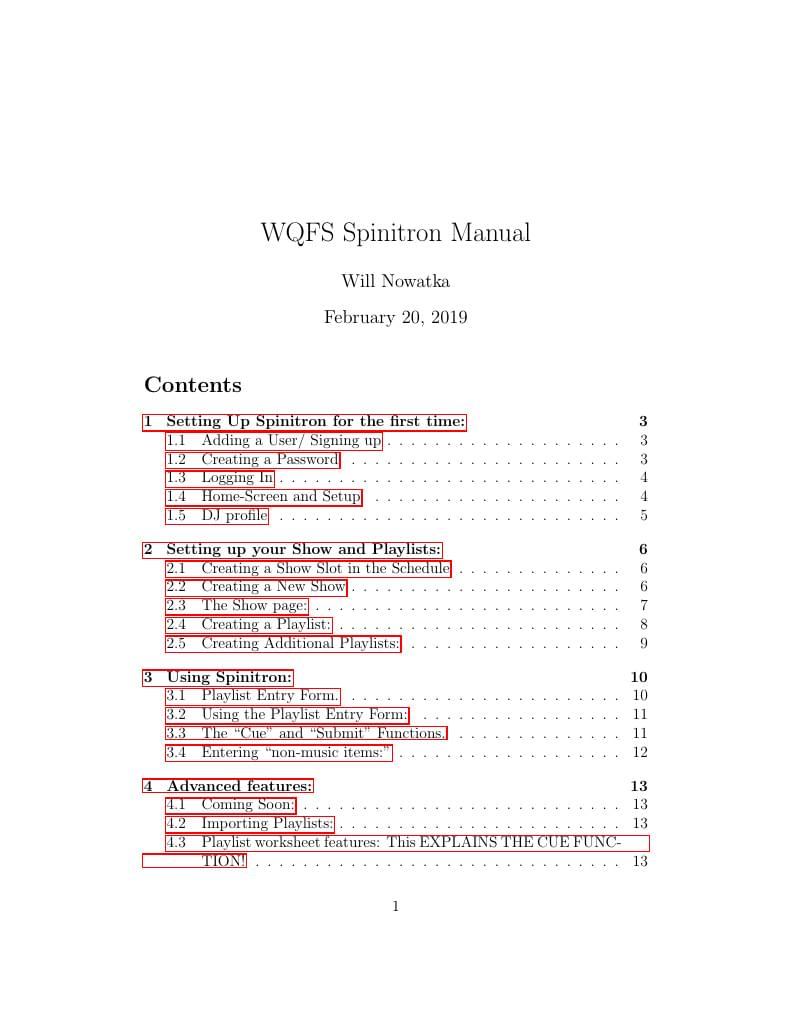
Spinitron V2 Manual for Radio DJs
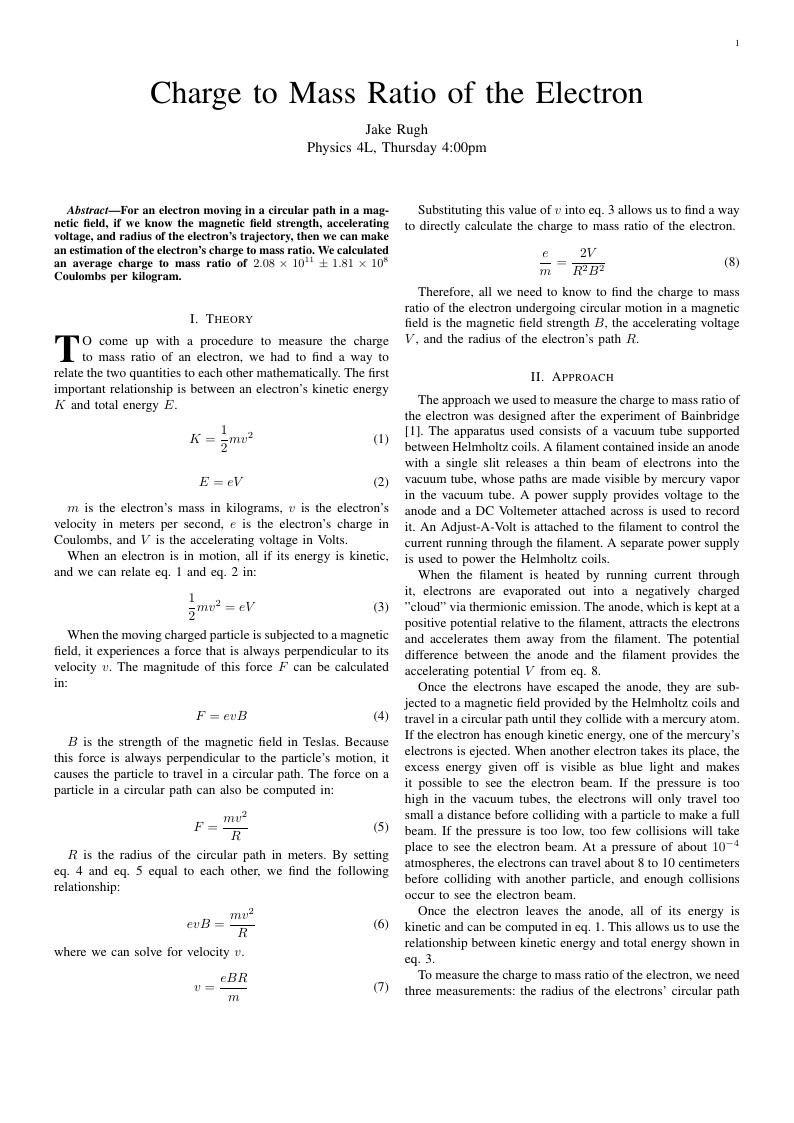
For an electron moving in a circular path in a magnetic field, if we know the magnetic field strength, accelerating voltage, and radius of the electron's trajectory, then we can make an estimation of the electron's charge to mass ratio. We calculated an average charge to mass ratio of \(2.08 \times 10^{11} \pm 1.81 \times 10^8\) Coulombs per kilogram.
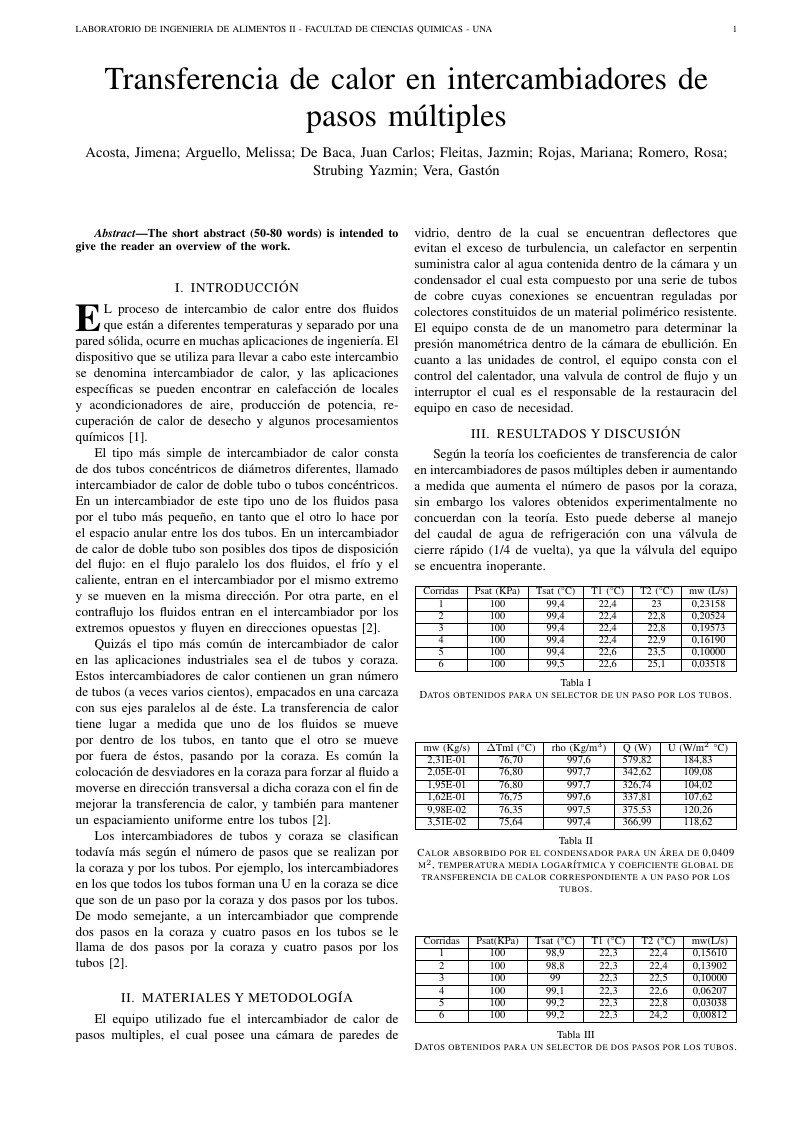
Transferencia de calor en intercambiadores depasos múltiples
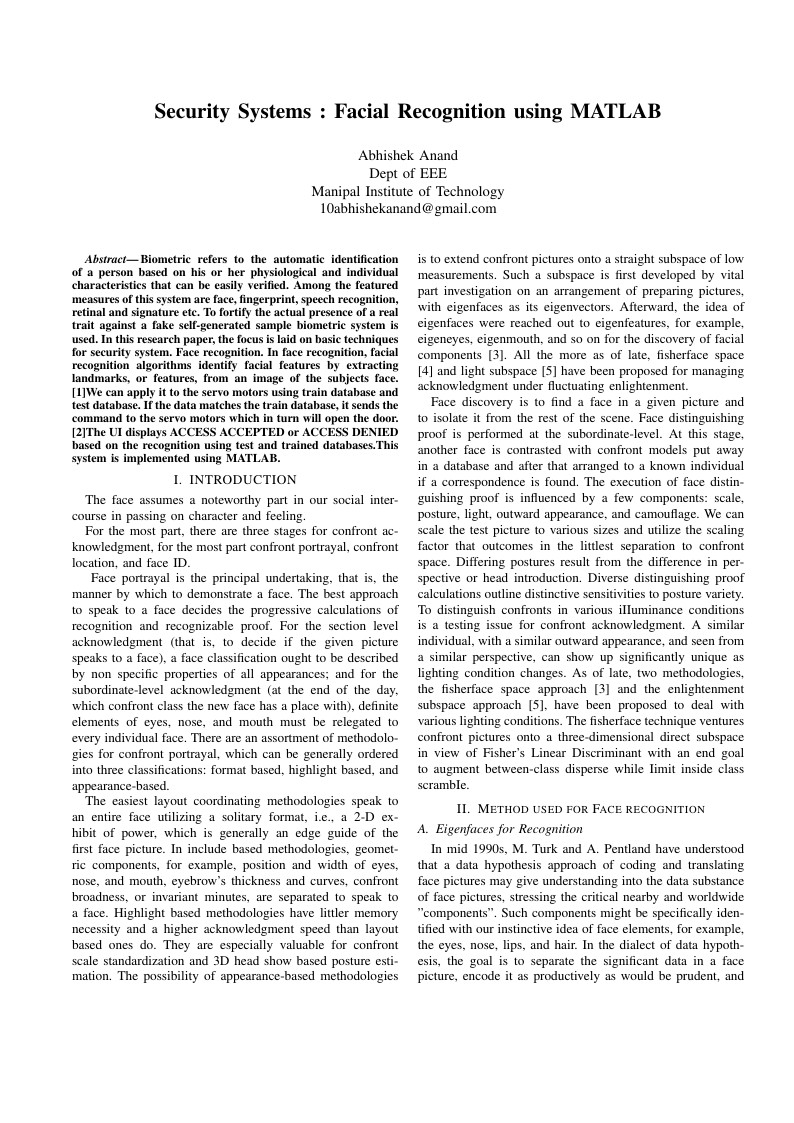
Biometric refers to the automatic identification of a person based on his or her physiological and individual characteristics that can be easily verified. Among the featured measures of this system are face, fingerprint, speech recognition, retinal and signature etc. To fortify the actual presence of a real trait against a fake self-generated sample biometric system is used. In this research paper, the focus is laid on basic techniques for security system. Face recognition. In face recognition, facial recognition algorithms identify facial features by extracting landmarks, or features, from an image of the subject’s face. [1]We can apply it to the servo motors using train database and test database. If the data matches the train database, it sends the command to the servo motors which in turn will open the door. [2]The UI displays ACCESS ACCEPTED or ACCESS DENIED based on the recognition using test and trained databases.This system is implemented using MATLAB.
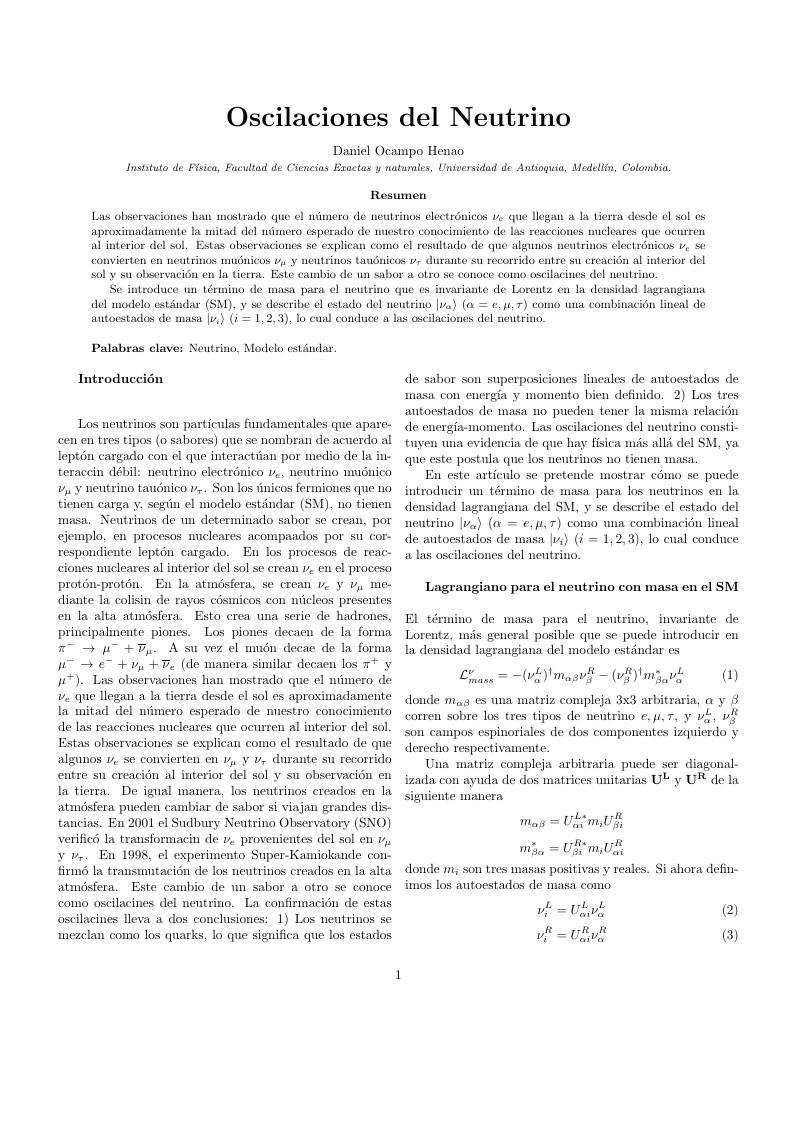
Las observaciones han mostrado que el numero de neutrinos electrónicos νe que llegan a la tierra desde el sol es aproximadamente la mitad del número esperado de nuestro conocimiento de las reacciones nucleares que ocurren al interior del sol. Estas observaciones se explican como el resultado de que algunos neutrinos electrónicos νe se convierten en neutrinos muónicos νμ y neutrinos tauónicos ντ durante su recorrido entre su creación al interior del sol y su observación en la tierra. Este cambio de un sabor a otro se conoce como oscilaciónes del neutrino. Se introduce un término de masa para el neutrino que es invariante de Lorentz en la densidad lagrangiana del modelo estándar (SM), y se describe el estado del neutrino |να⟩(α = e, μ, τ) como una combinación lineal de autoestados de masa |νi⟩ (i=1,2,3), lo cual conduce a las oscilaciones del neutrino.
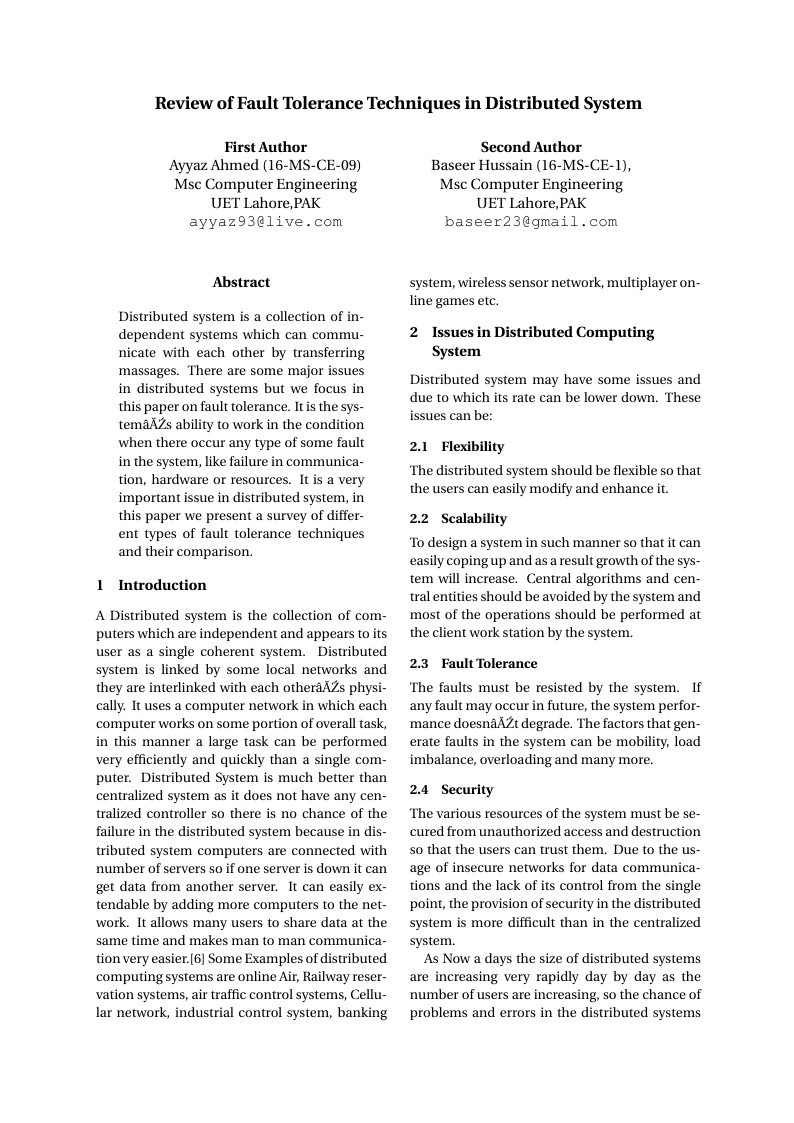
Distributed system is a collection of independent systems which can communicate with each other by transferring massages. There are some major issues in distributed systems but we focus in this paper on fault tolerance. It is the system’s ability to work in the condition when there occur any type of some fault in the system, like failure in communication, hardware or resources. It is a very important issue in distributed system, in this paper we present a survey of different types of fault tolerance techniques and their comparison.
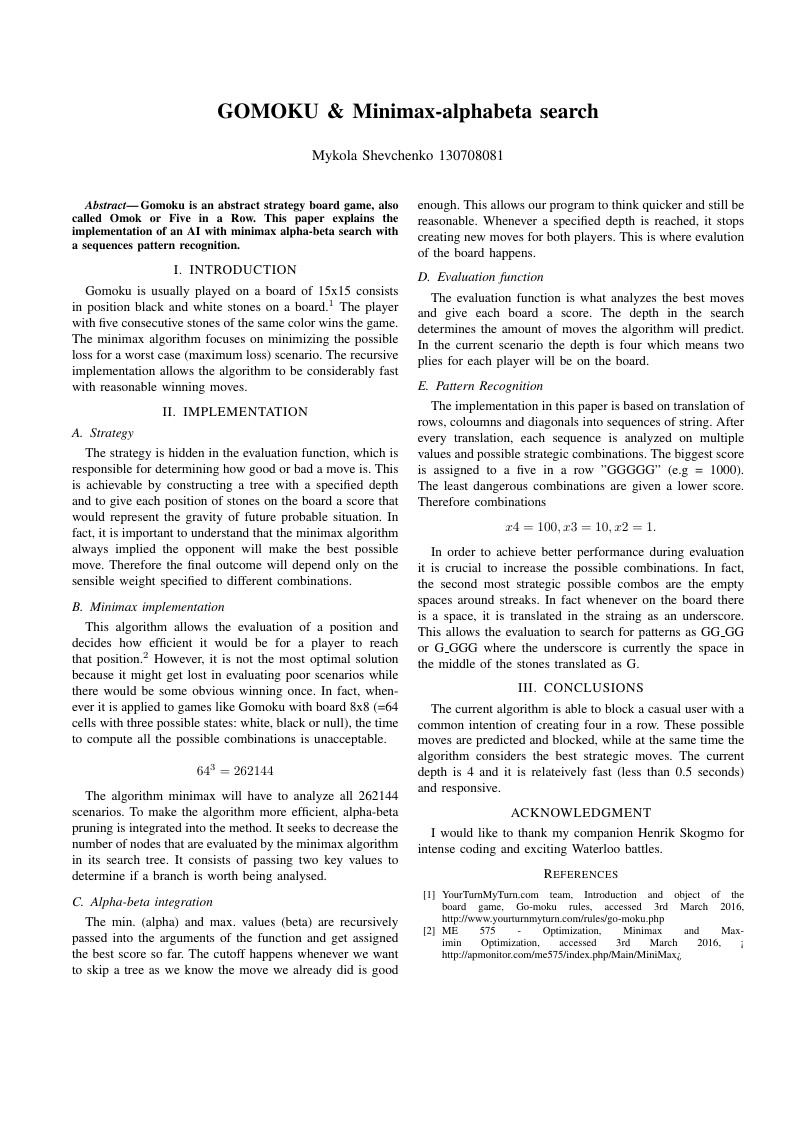
Gomoku is an abstract strategy board game, also called Omok or Five in a Row. This paper explains the implementation of an AI with minimax alpha-beta search with a sequences pattern recognition.
\begin
Discover why over 20 million people worldwide trust Overleaf with their work.